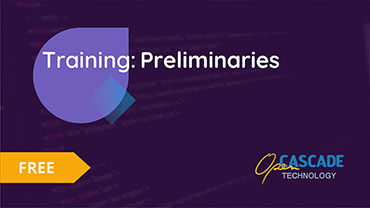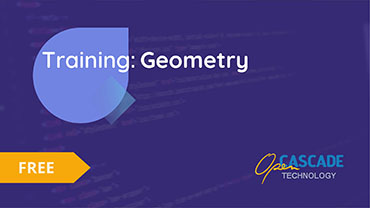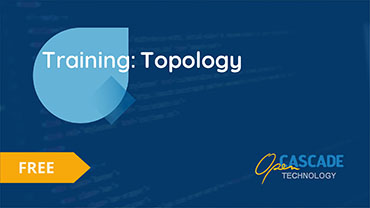Being the only free open source 3D modeling kernel, Open CASCADE Technology (OCCT) has thousands of users among which there are research institutions, universities, R&D and IT departments of industrial companies, software vendors and independent developers. To help them fully explore OCCT possibilities and take their projects onto new heights, there are various types of educational programs on OCCT available, including offline or online CAD courses and e-learning.
Types of trainings
OCCT technical training services range from CAD courses for beginners already having knowledge of high school mathematics and statistics materials to professional CAD software training. There are two main groups of learning programs provided by Open Cascade Team:
- Training
- E-learning.
You can start learning OCCT basics with Open CASCADE Technology free training materials.
Training
Training is a format of providing educational materials about OCCT in the form of instructor-led classes either on Open Cascade or client site or in an online format. Trainings include Fundamentals, Application Framework, and Shape Healing modules on your choice with lots of practical examples and explanations. Individual cases can also be solved as a part of trainings. This is a one-of-a-kind solution for small to large enterprises, allowing to receive answers to individual questions from OCCT experts directly.
Free Training Materials
Please click on the images below to explore free Open CASCADE Technology training materials. They include:
• Preliminaries which aim at general OCCT-related problems
• Geometry presentation revealing parametric and non-parametric geometry available in the OCCT
• Topology - advanced topic related to modeling
Fundamentals
The fundamentals training program is a common way to learn OCCT. The objective of fundamentals online CAD classes is teaching to develop with OCCT to build, handle and view CAD models in an application. This instruction aims at giving a general overview of the kernel as well as sufficient theoretical background. Unlike other kernels, the OCCT gives its user all available functionality, and, sometimes, it is difficult to find an appropriate tool within 2.5 million lines of code. The training harnesses the “building blocks” idea emerging the possibility to adapt it easily. The goal of this document is to give a reader a general overview of the training program. Technically, the training is divided into 11 chapters:
- Introduction
- DRAW
- Handles
- Utilities and services
- Geometry
- Topology
- BRep Model (Boundary representation)
- Modeling algorithms
- Features
- Visualization
- CAD files Import/Export
The first chapter serves as a bridge between a trainee and the OCCT. It covers gaps in knowledge, drawing basic OCCT concepts, and gives an understanding of the training’s workflow. This module design was elaborated to cover wide range of participants’ questions from performance tips and OCCT basic concepts to operation system tools: files and folders manipulation, timers, parallel execution, synchronization primitives, etc. There are also exercises available in terms of this module: smart pointers manipulations; collections usage: array, vector, list, set, map, sequence; exceptions. In terms of DRAW module user studies OCCT’s command line application (DRAW): its idea, implementation and purposes, gets to know useful built-in DRAW commands and understand connection between DRAW and C++. Geometry module brings in well-known geometric objects such as Bezier curves or b-spline curves. Besides, available geometric algorithms are also discussed. This part of the course also covers advanced geometry, methods of construction and constraint geometry in 2D. Topology follows by the geometry. This topic shows how real three-dimensional objects are constructed in the OCCT and how they are manipulated as well. The OCCT utilizes a highly appreciated boundary representation (b-rep) approach for modeling, which aims at modeling of object by its boundary. This topic concentrates on two things: topological data structure and topological algorithms. There are also modules on modeling algorithms, visualization and different types of data exchange. They cover topics ranging from visualization techniques (rasterization, ray-tracing) to Import/export to STEP, IGES and BRep formats.
Application Framework
Training program on OCCT application framework aims to help participants learn, how to create an application with this module: OCAF components, Ready-to-use attributes, Modification & Regeneration processes are taught in this course. OPEN CASCADE Fundamentals training module covering basic OCCT concepts is a prerequisite for this program.
Shape Healing
Shape Healing training is intended for the use of OCCT to make analysis and repair models from other CAD systems. It’s prerequisites include knowledge of C++ as well as OCCT Fundamentals course.
E-learning
E-learning is a type of interactive remote training covering 3 study modules:
- Fundamentals
- Application Framework
- Shape Healing
The prerequisites include knowledge of mathematics and C++ programming; the software requirements include Open CASCADE Technology and one of the supported building tools configurations (Shape Healing exercise can be built with MS Visual Studio only). Substantial e-learning advantage is that there is no fixed schedule for the chapters - you can start on any date convenient for you and your team. This is also a good opportunity to pass the program at your own speed.
To learn more or apply for Open CASCADE Technology trainings, please visit Open Cascade website.



